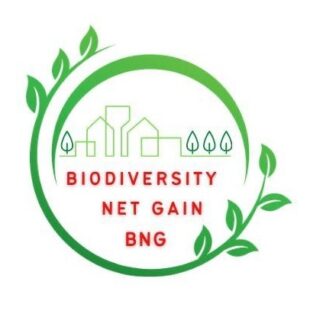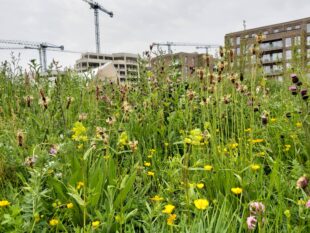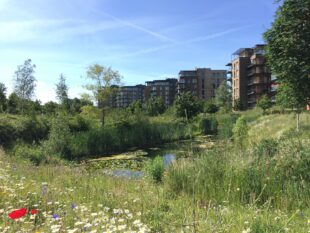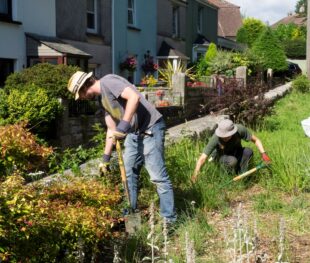
Welcome to our first Natural England instructional Biodiversity Net Gain (BNG) guest blog. Three distinguished experts share their top tips and impart their insights on designing for BNG. They are Julia Baker, Technical Director at Mott MacDonald, David Mooney, CEO at London Wildlife Trust and Dr Gemma Jerome, Director at Building for Nature.

Julia Baker, Technical Director at Mott MacDonald
Discussions about Biodiversity Net Gain (BNG) often focus on the biodiversity metric. That’s been necessary, especially to explore habitats as a proxy indicator for biodiversity and the data required for metric calculations.
With mandatory BNG fast approaching, let’s talk about what truly successful BNG is. It follows the mitigation hierarchy, creates and enhances wildlife-rich habitats, and this needs a habitat design based on sound ecological principles.
There are many considerations when designing habitats to achieve BNG, my top starters are:
1/ Set design objectives.
A BNG design should have clear objectives for habitats being retained, created or enhanced. These should link with all requirements for the habitats, such as screening, amenity use, and species mitigation. That way, the viability of a BNG design can be assessed early as well as the potential for additional benefits, such as sustainable drainage.
2/ Collect baseline data to design BNG.
Successful habitat creation depends on many factors, including soil (especially when creating or enhancing grasslands), drainage, topography as well as past management practices. Other factors include constraints to habitat creation such as utilities, and the landscape context of the site including connectivity with surrounding habitats.
So, although many think about UKhab surveys and habitat condition assessments for metric calculations, it’s vital to gather all data for designing BNG, and as early as possible. It not only makes the most of time on-site for metric surveys, it also (and most importantly) enables a design-led conversation for achieving BNG.
3/ Adopt a collaborative design approach.
Collaboration between landscape architects and ecologists is fundamental to designing BNG. Establishing this early makes for a much better design process. Collaborating to prioritise feasible habitat creation and enhancement, ensuring viability over 30 years. Working together to focus on the requirements for metric calculations and necessary design outputs such as planting schedules and soil specifications.
In summary, the biodiversity metric is only one element of BNG. For BNG to be truly successful, let’s focus on designing wildlife-rich habitats.
David Mooney, CEO at London Wildlife Trust
1/ Consider how habitats will work.
Designing for BNG must not only take account of how the habitats will work for wildlife but how people will use them. There’s no getting away from the fact that habitat enhancement or habitat creation, should be mindful of the fact that most green spaces will also have recreational purposes often for large numbers of people. Therefore, design for what will work within these limitations.

2/ Understand solutions in an urban context.
Many habitats in an urban context will need to be highly constructed and engineered habitats. They are habitats that will be designed by collaboration between landscape architects, ecologists and civil engineers. Often soils and substrates will need to be imported. There will need to be solutions to take account of urban paraphernalia such as pipes, cables and other subsurface constraints as well as the more obvious parts of the urban environment such as buildings, roads and railway lines. Shading and lack of natural irrigation may also be factors to consider. Understand the geometry of the space before designing new habitats.
3/ Be patient with supply chains.
Think about supply chains for the development and for maintenance and management. There will be a significant increase in demand for products and planting material, especially for special urban habitats such as biodiverse green roofs, bioswales and raingardens. There will also be a need for more specialist and skilled management of these new habitats. It will take some time for the industry to gear up to supply the materials and labour we will need. This is especially true outside cities like London and Manchester where biodiverse urban greening has been promoted through Urban Greening policies for several years. Be bold but be patient too.
Dr Gemma Jerome, Director at Building for Nature
There has never been a more important time to address the need for strong, and practical solutions to secure high-quality placemaking that puts outcomes for people and wildlife at the heart of the design process. For this reason, the role of long-term management, maintenance, aftercare and stewardship requirements needs to be built into the design from day one.
BNG legislation demands a 30-year monitoring period, prompting local planning authorities to adapt for these long-term responsibilities. As such local planning authorities and planning application processes are gearing up to support BNG assessments and audit needs to factor in long-term liabilities. This includes responsible bodies, liabilities for landowners, skills and knowledge gaps in the sector for management companies and contractors meeting these long-term liabilities.

Three top tips to take away include:
1/ Integrated Approach for Green Infrastructure.
Advocate for an integrated approach to managing green infrastructure by amalgamating various legislative requirements, emergent sustainability standards, and investor demands into the design process. This integration helps deliver consistent environmental, social, and economic benefits while meeting diverse regulatory and reporting standards.
2/ Prioritise Long-Term Planning in Design.
Emphasise the significance of incorporating long-term management, maintenance, monitoring, and stewardship requirements right from the initial stages of design. Addressing these aspects at the outset ensures compliance with BNG legislative requirements. This includes the essential 30-year monitoring period, local planning authority support, and accounting for long-term liabilities.
3/ Collaboration and Training Initiatives.
Encourage collaboration among government agencies, professional membership bodies, and organisations providing industry standards. Their joint efforts can bridge knowledge gaps, offer interdisciplinary training, and develop standards ensuring effective long-term stewardship of green infrastructure projects. This collaboration helps maximise the potential for climate-resilient biodiversity gains. This approach ensures successful project lifecycles, which together optimise the potential to secure long-term outcomes for people and wildlife.
5 comments
Comment by rob yorke posted on
Good stuff. It would also be useful to hear more from 'distinguished' expert land managers who are delivering BNG for developers and planners at the grass roots.
The need to undertake baseline biodiversity and habitat audits now, is an especially important aspect.
best wishes
Rob
robyorke.co.uk
Comment by Michele Lavelle posted on
Great article and insights, especially the comment that the biodiversity metric is just one aspect of BNG. My main interest is in the interpretation of the calculations leading to design and successful implementation.
Having worked for many years on PFI and BSF contracts we learned to organise our information in such a way that it became easy to develop 25 year maintenance plans for the facilities management team who took over on completion. As such we started organising our planting plans into landscape typologies which could also be termed habitats. However, each typology has particular maintenance requirements over such a prolonged period. For example, herbaceous plants usually only live for 7 years, grass with bulbs require specific mowing regimes, areas of whip planting if designed and detailed properly can be left to battle it out among the species after successful establishment etc.
I run a lecture series http://www.softscapematters.com which teaches a methodology encompassing all this, including soil handling and regrading considerations such as angles of repose and bulking factors, through softscape masterplanning, design and long term maintenance. We also have an input from both a supplier and contractor to reinforce the importance of clarity of information and material that is commercially available!
I look forward to seeing how BNG is implemented through all the stages.
Comment by Andrew Thomas posted on
Good Evening,
I have a suitable area of land of 25 acre on our farm in Pembrokeshire, West Wales. It has a high habitat of rivers,ponds,woodland, wetlands, with an abundance of wildlife. It is perfect to off set a Biodiversity scheme to offer a developer for mitigating BNG. is it possible legally to sell credits to developments in England.
Looking forward to hearing from yourselves at your earliest convenience,
Many thanks,
Andrew Thomas,Haverfordwest Pembs,West Wales.
Comment by Ros Beresford posted on
To save biodiversity on site at the onset would be basic good practice. Top soil retension for on site redistribution would help a great deal to reduce the displacement. Referring to the development of green fields as in whitfield Dover Kent I see no evidence of this happening and as above the idea of importing top soils seems to be acceptable. But it involves carbon miles along with transposing possibly incompatible microbial systems. Not only is there no evidence so far at least from my observations across the southern counties of designing around say a 'tree scape' where native species such as oak are proactively part of the design, I see no interconnecting hedges planted either as in fact once was the way across the whole country. Very often concrete boarding and close fence panels are installed. There is also no mandatory mitigation for crossing the various barriers constantly created so reducing access to foraging by the many species unable to fly. I have been observing the trends towards urbanising field sites and see so many missed opportunities. Huge warehouse rooftops too on retail and agricultural buildings that could be effectively meadow field sites instead of metal or plastic sheeting alone. Some do have solar panels now but not many. If we do just remove top soils and move them around as a commodity I think we will certainly lose the best chance of working with the biodiversity that we might be able to salvage regionally. That is a concern.
Comment by Jonathan Mortin posted on
In many parts of the UK Drystone walls are an important part of the landscape and a valuable wildlife resource. They can be extremely biodiverse supporting lichens,mosses, wildflowers, invertebrates, amphibians, reptiles and small mammals. Yet they score zero in BNG assessments so their removal can be easily justified. This is a serious defect in the assessment protocol and urgently needs addressing.